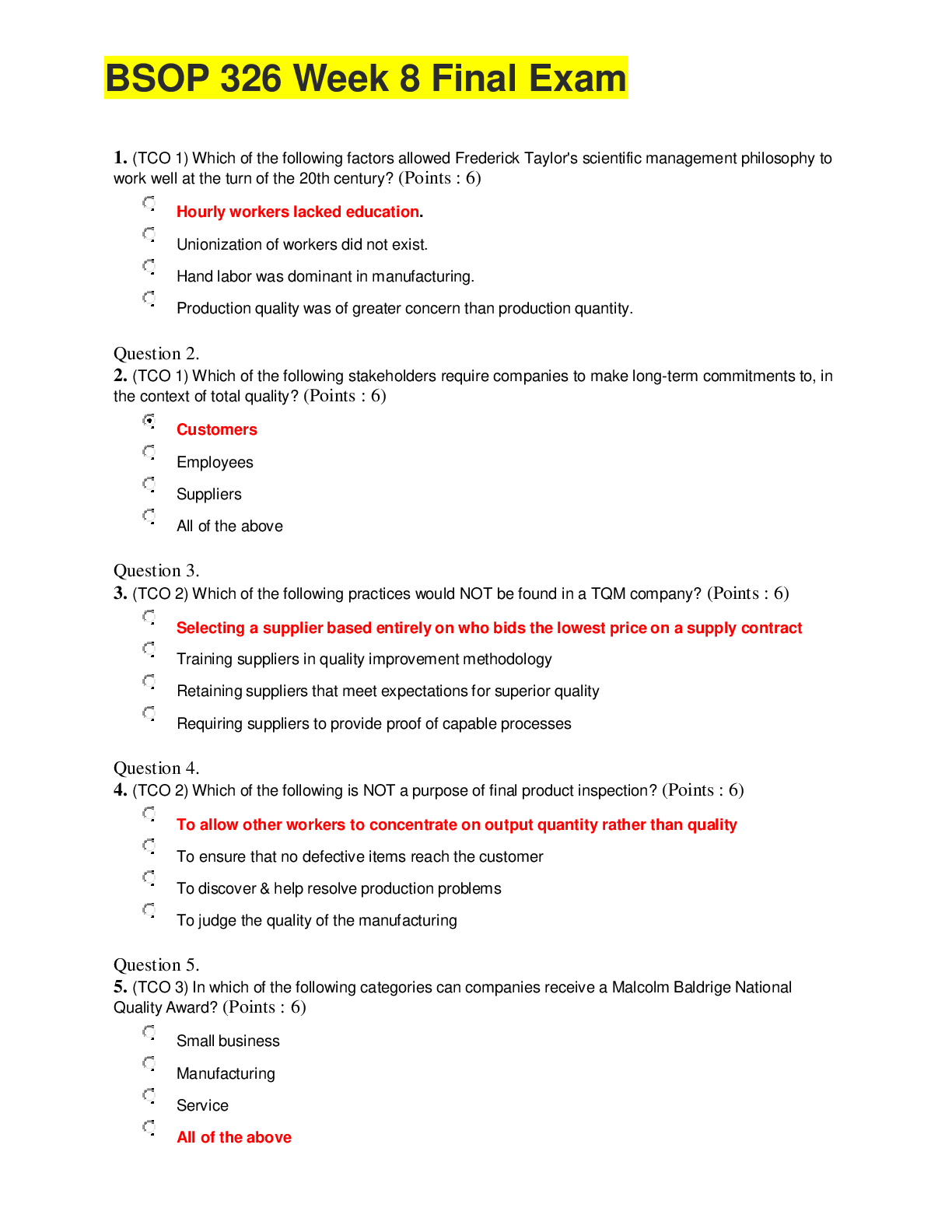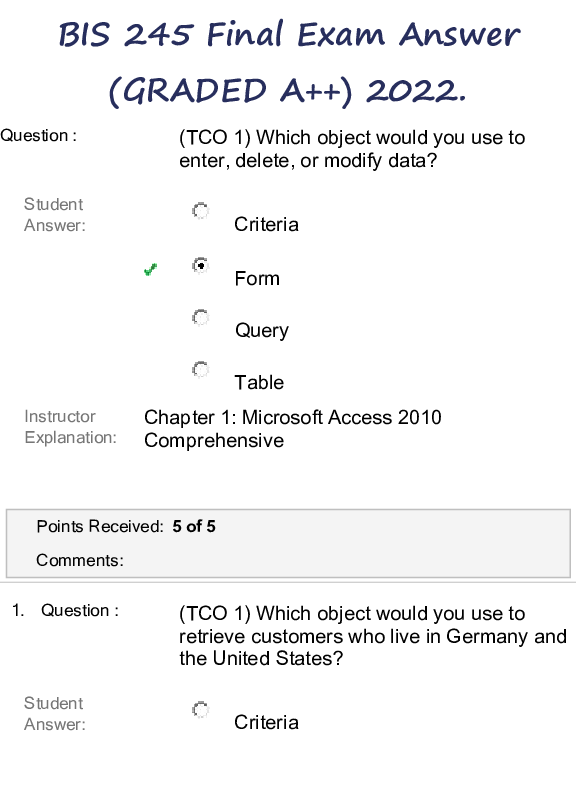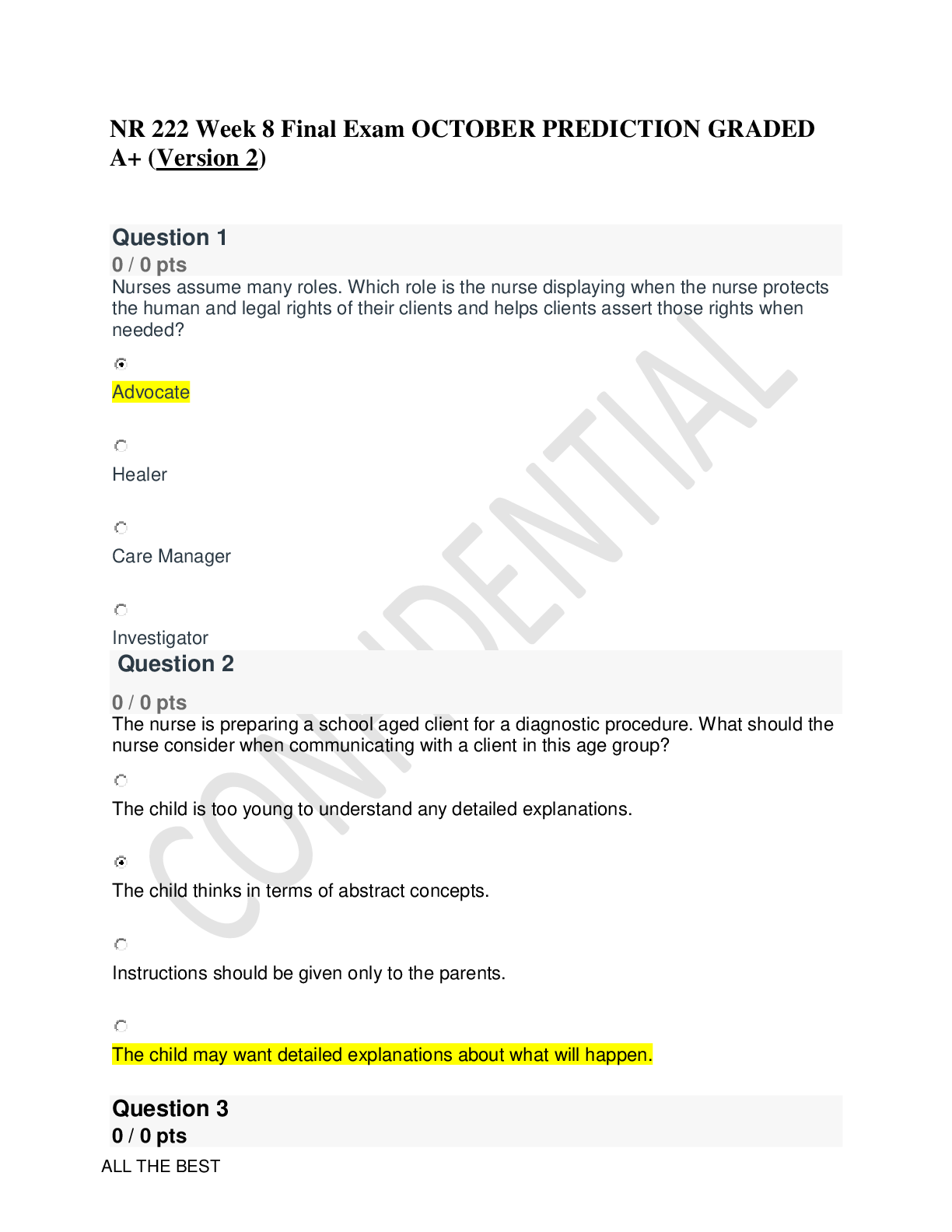NURS 6560 FINAL EXAM (GRADED A
Document Content and Description Below
The AGACNP is reviewing a chart of a head-injured patient. Which of the following would alert the AGACNP for the possibility that the patient is over hydrated, thereby increasing the risk for increa... sed intracranial pressure? BUN = 10 Shift output = 800 ml, shift input = 825 ml Unchanged weight Serum osmolality = 260 Answers available at https://bit.ly/2VNFmXT A patient who has been in the intensive care unit for 17 days develops hypernatremic hyperosmolality. The patient weighs 132 lb (59.9 kg), is intubated, and is receiving mechanical ventilation. The serum osmolality is 320 mOsm/L kg H2O. Clinical signs include tachycardia and hypotension. The adult-gerontology acute care nurse practitioner's initial treatment is to: reduce serum osmolality by infusing a 5% dextrose in 0.2% sodium chloride solution reduce serum sodium concentration by infusing a 0.45% sodium chloride solution replenish volume by infusing a 0.9% sodium chloride solution replenish volume by infusing a 5% dextrose in water solution. Answers available at https://bit.ly/2VNFmXT A 16-year-old male presents with fever and right lower quadrant discomfort. He complains of nausea and has had one episode of vomiting, but he denies any diarrhea. His vital signs are as follows: temperature 101.9°F, pulse 100 bpm, respirations 16 breaths per minute, and blood pressure 110/70 mm Hg. A complete blood count reveals a WBC count of 19,100 cells/µL. The AGACNP expects that physical examination will reveal: + Murphy’s sign + Chvostek’s sign + McBurney’s sign + Kernig’s sign Myasthenia gravis is best described as: An imbalance of dopamine and acetylcholine in the basal ganglia Demyelination of peripheral ascending nerves Demyelination in the central nervous system An autoimmune disorder characterized by decreased neuromuscular activation Mrs. Coates is a 65-year-old female who is on postoperative day 1 following a duodenal resection for a bleeding ulcer. She had an uneventful immediate postoperative course, but throughout the course of day 1 she has complained of a mild abdominal discomfort that has progressed throughout the day. This evening the AGACNP is called to the bedside to evaluate the patient for persistent and progressive discomfort. Likely causes of her symptoms include all of the following except: Colic due to return of peristalsis Leakage from the duodenal stump Gastric retention Hemorrhage Answers available at https://bit.ly/2VNFmXT [Show More]
Last updated: 1 year ago
Preview 1 out of 22 pages
Instant download
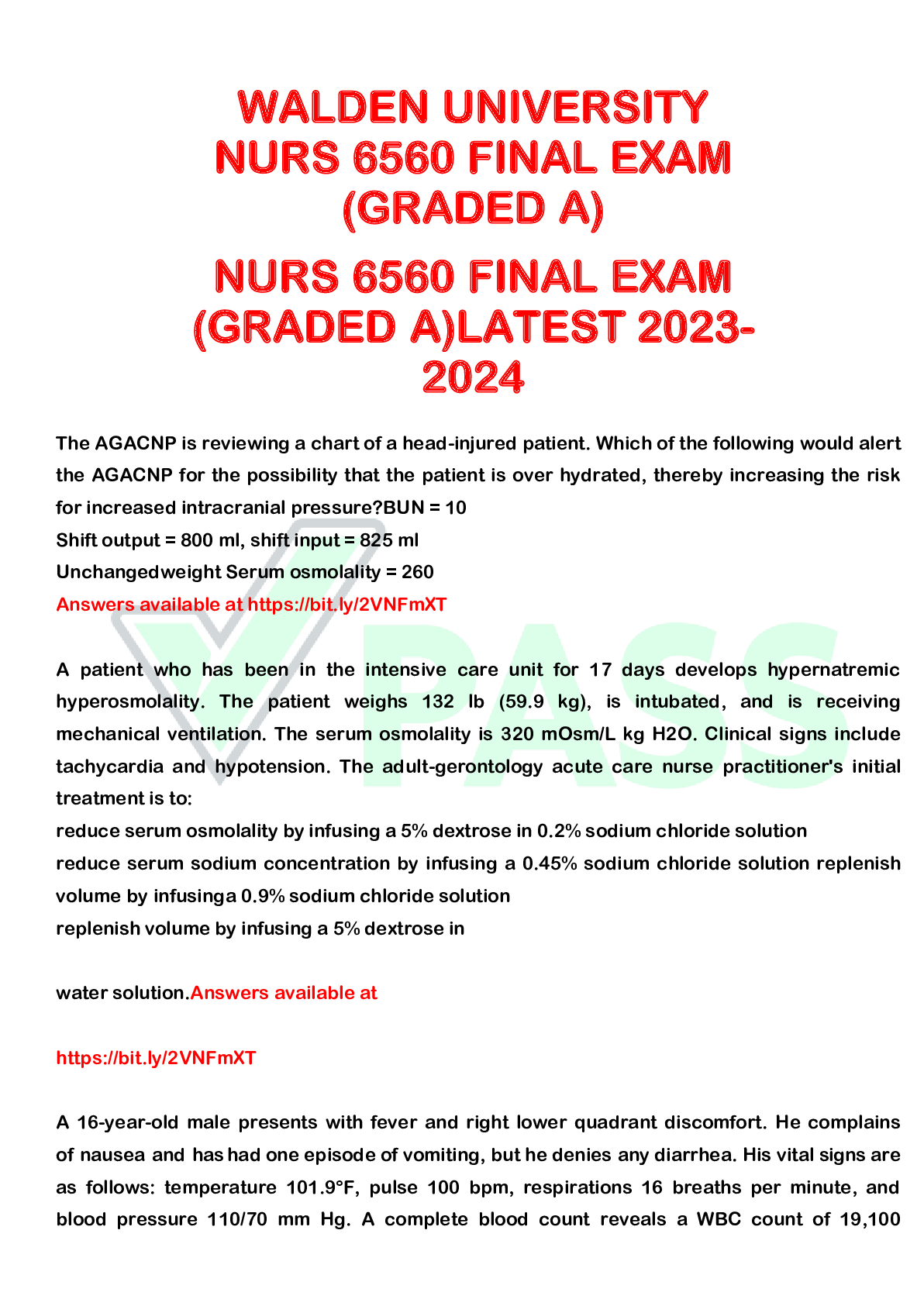
Buy this document to get the full access instantly
Instant Download Access after purchase
Add to cartInstant download
Reviews( 0 )
Document information
Connected school, study & course
About the document
Uploaded On
Jan 20, 2023
Number of pages
22
Written in
Additional information
This document has been written for:
Uploaded
Jan 20, 2023
Downloads
0
Views
23

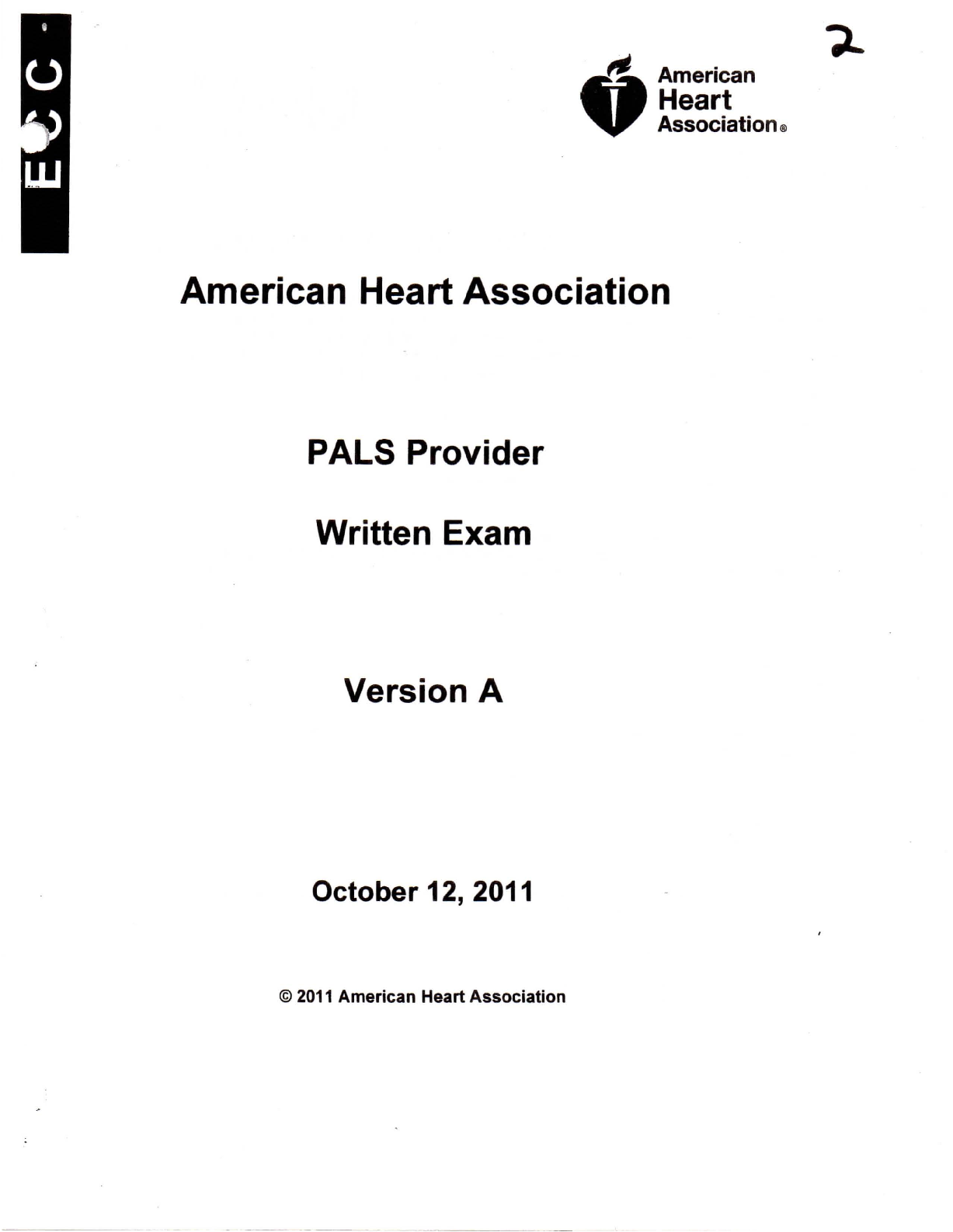
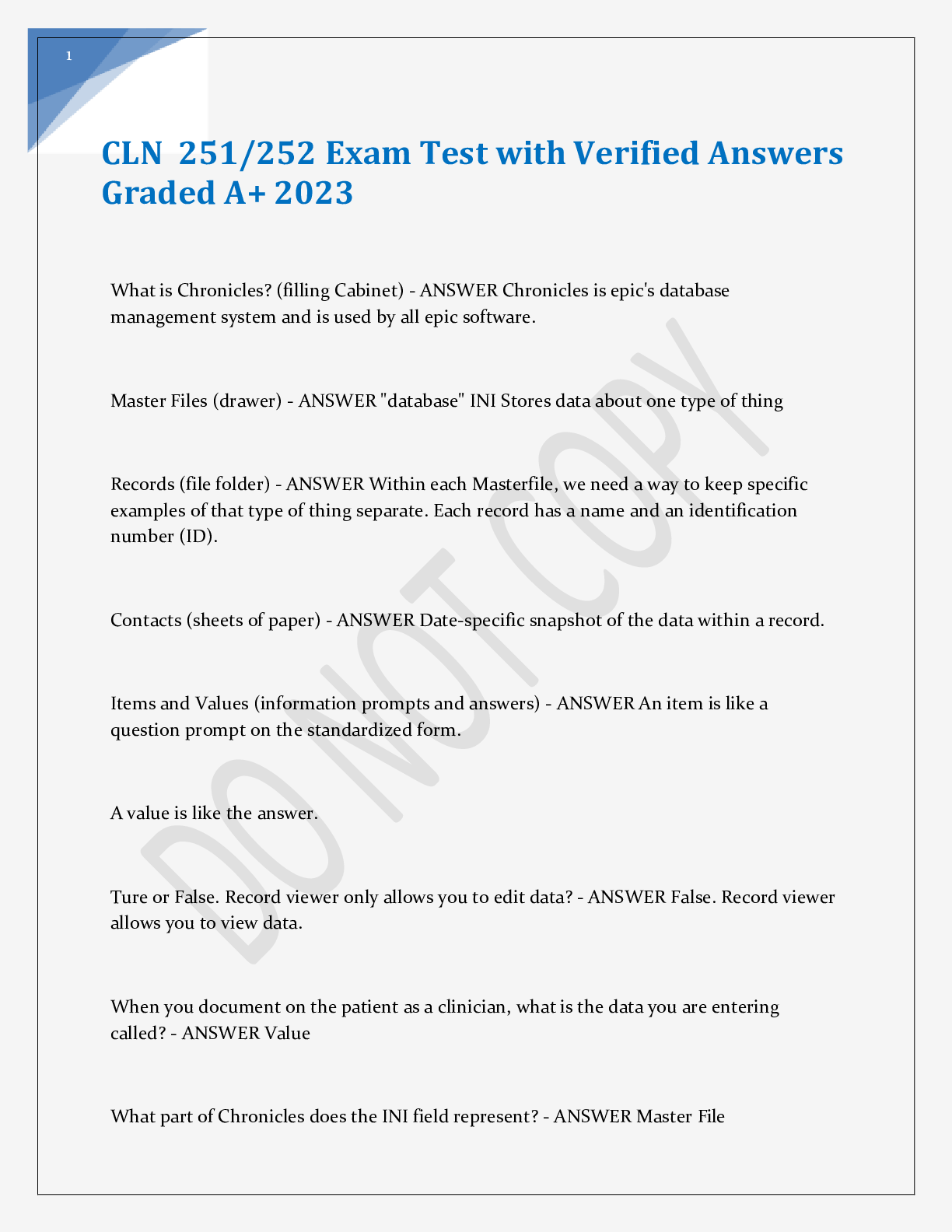
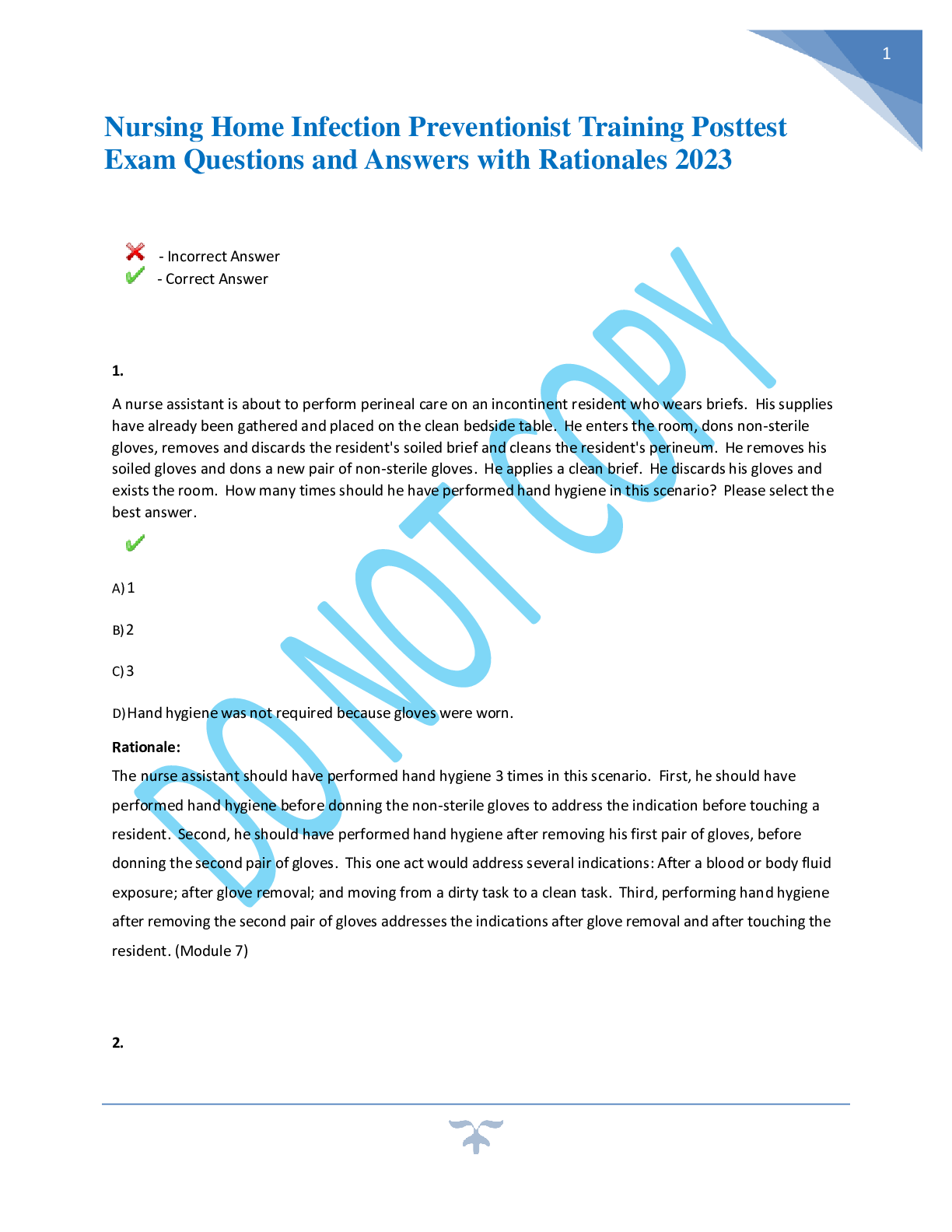
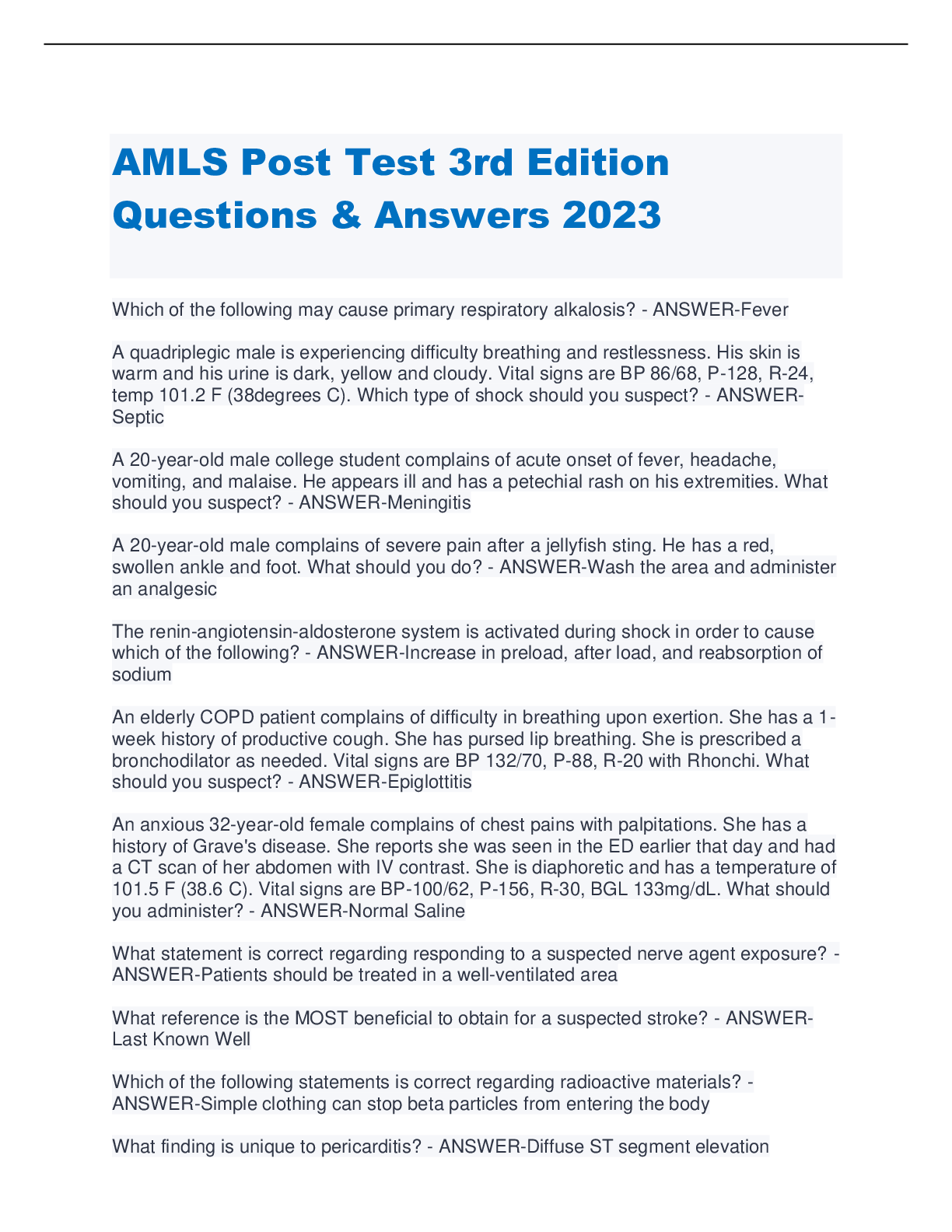
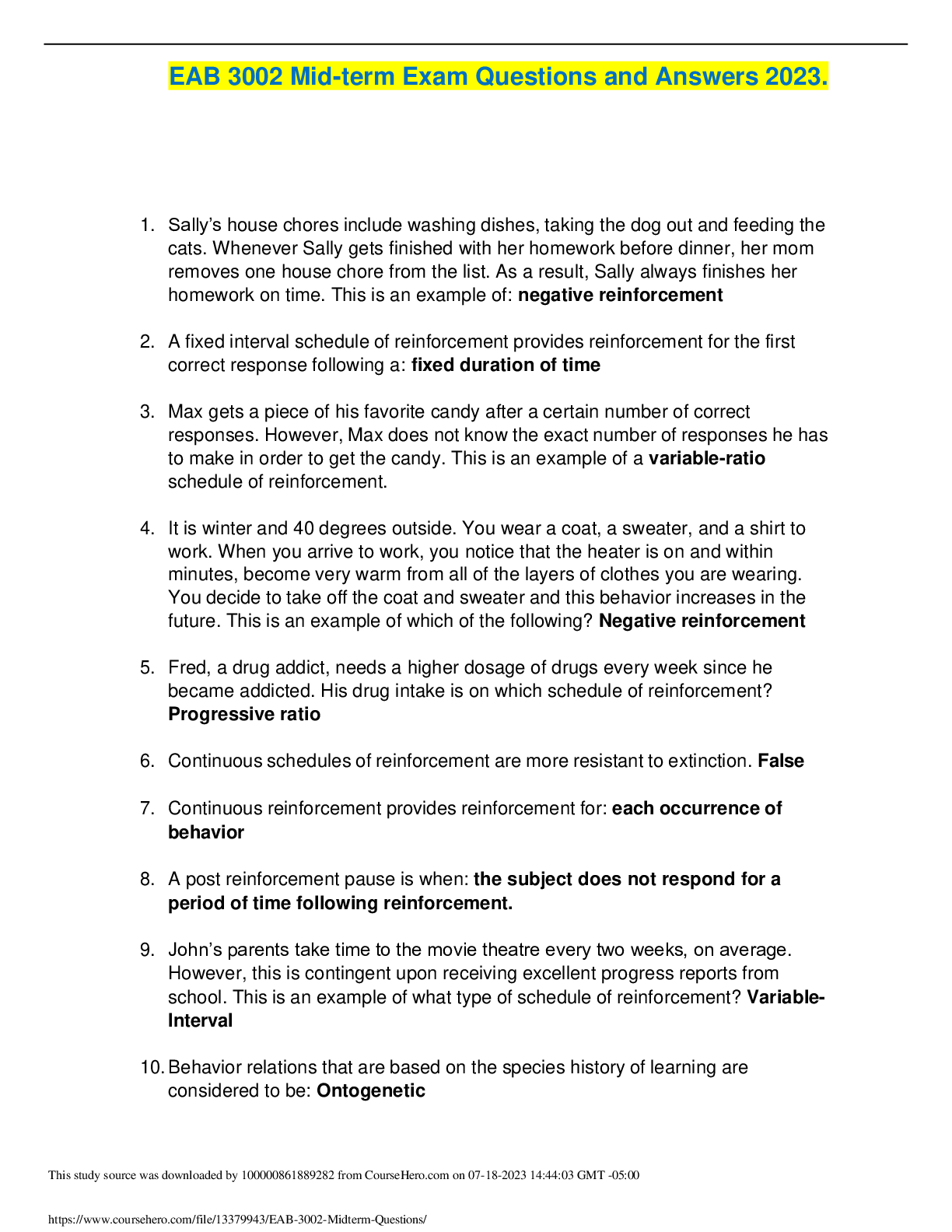

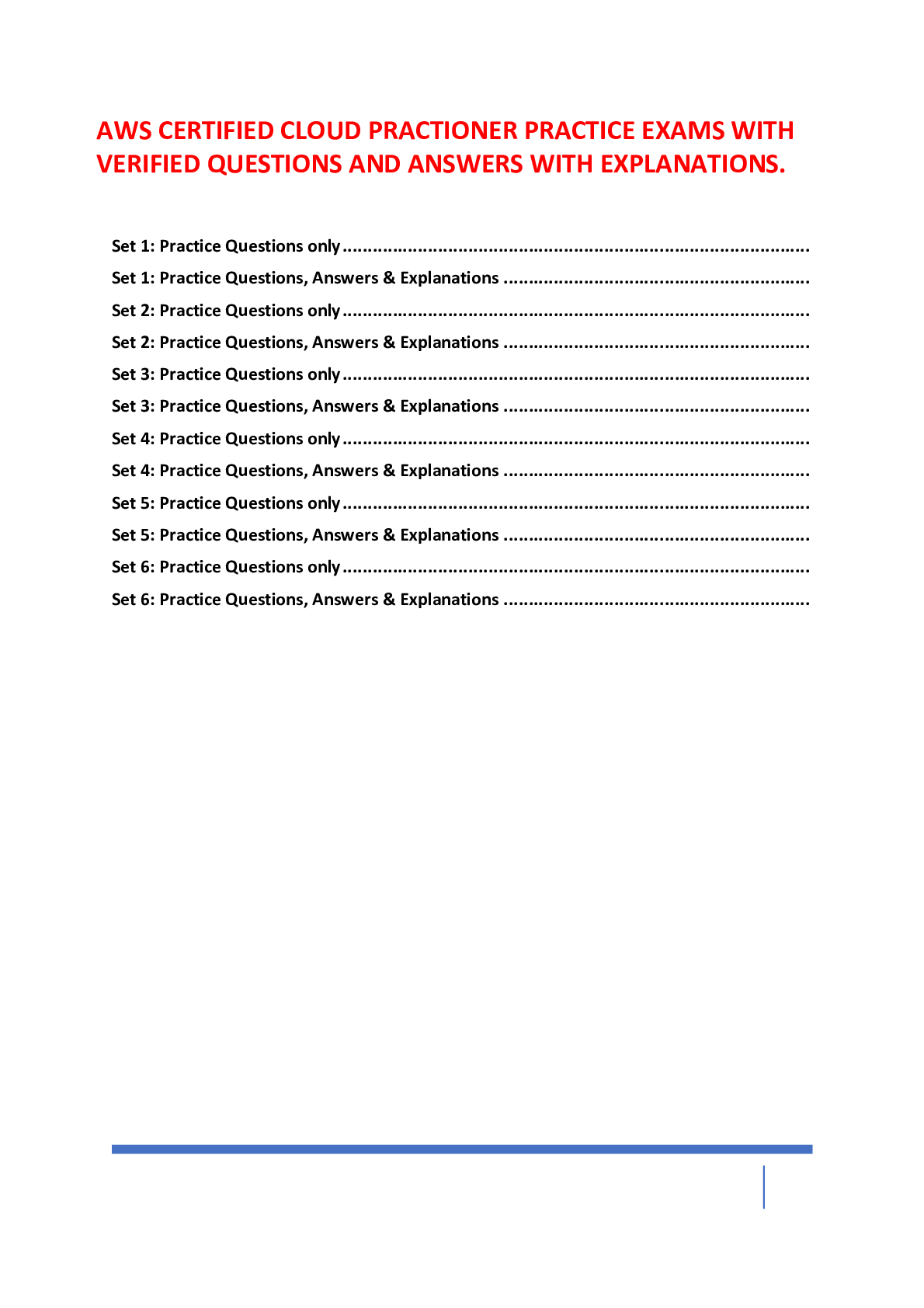
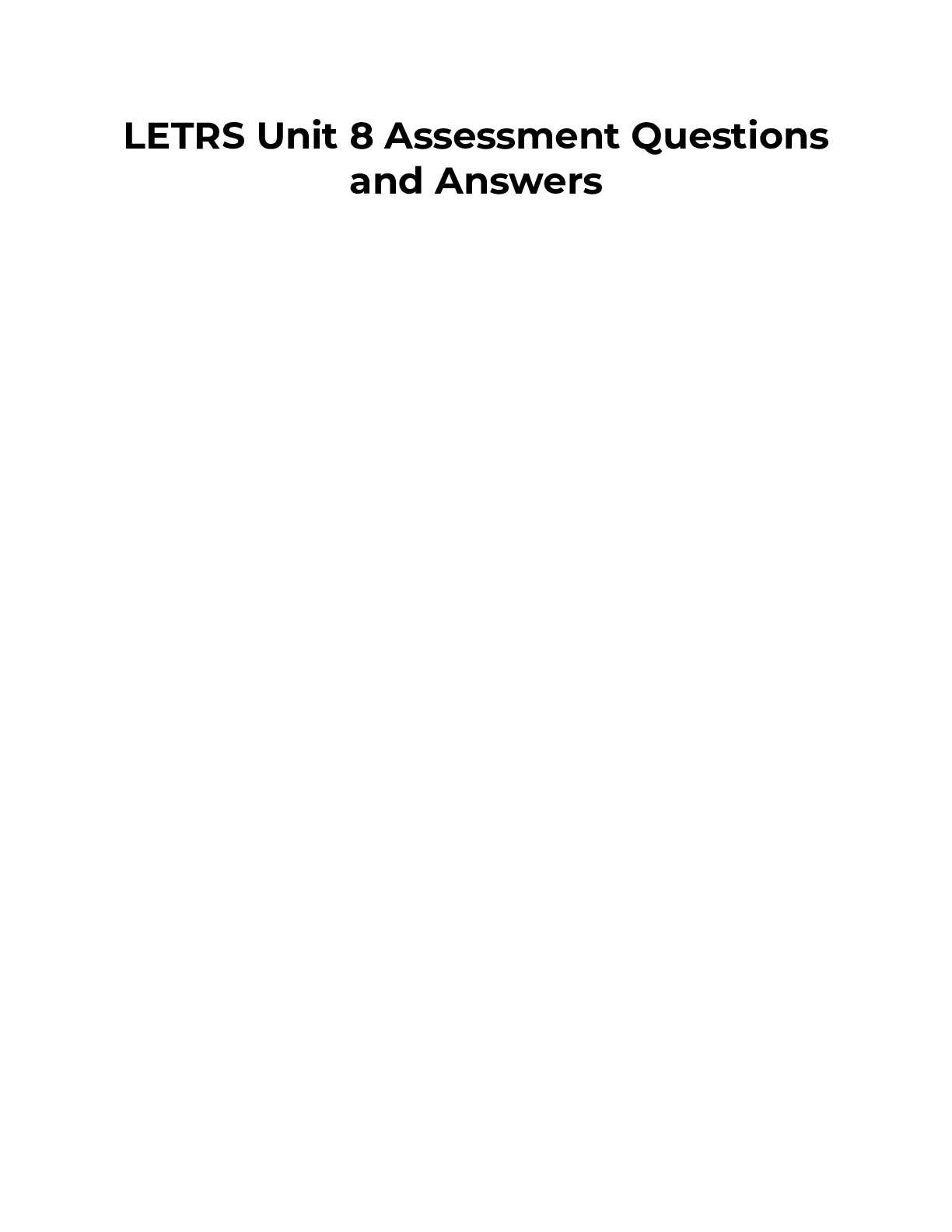
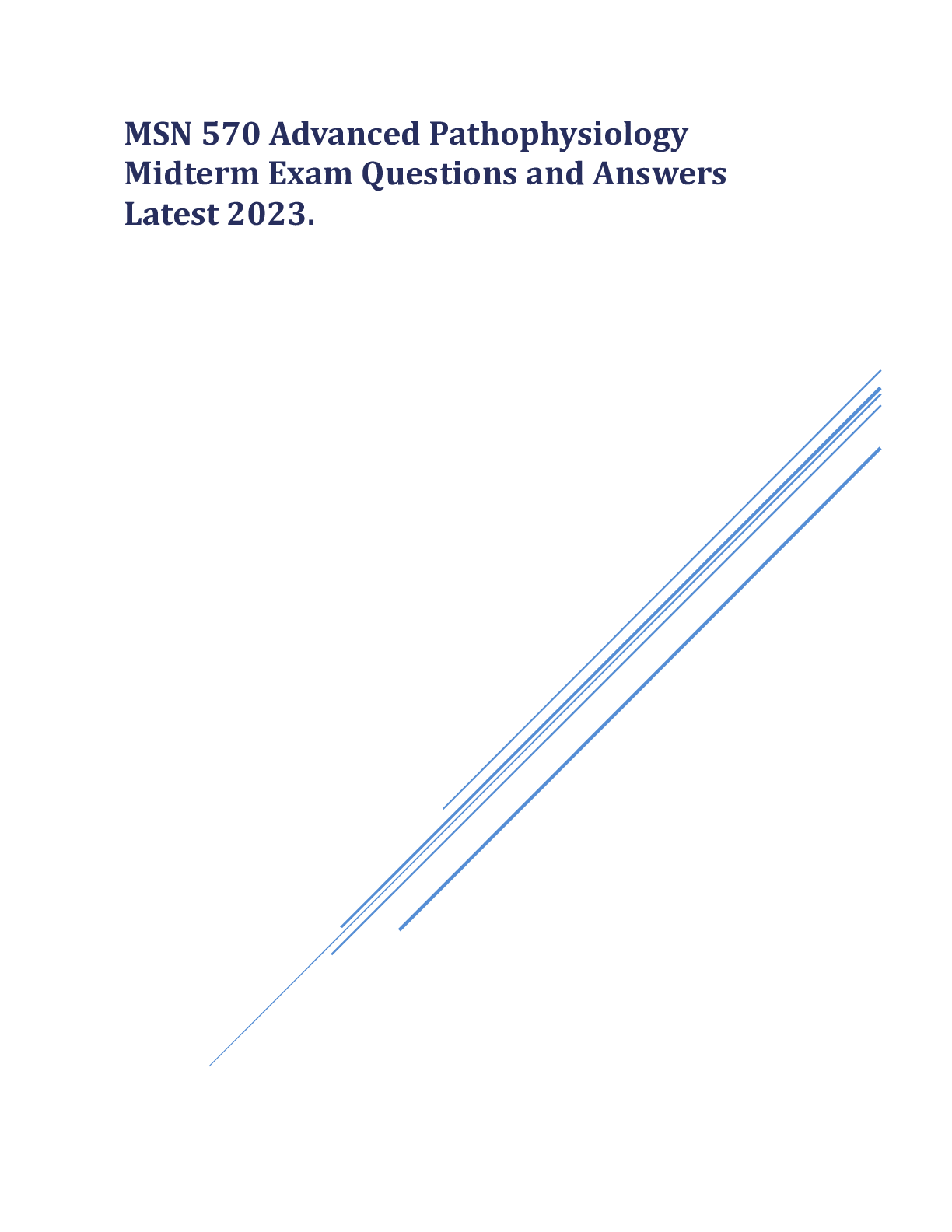
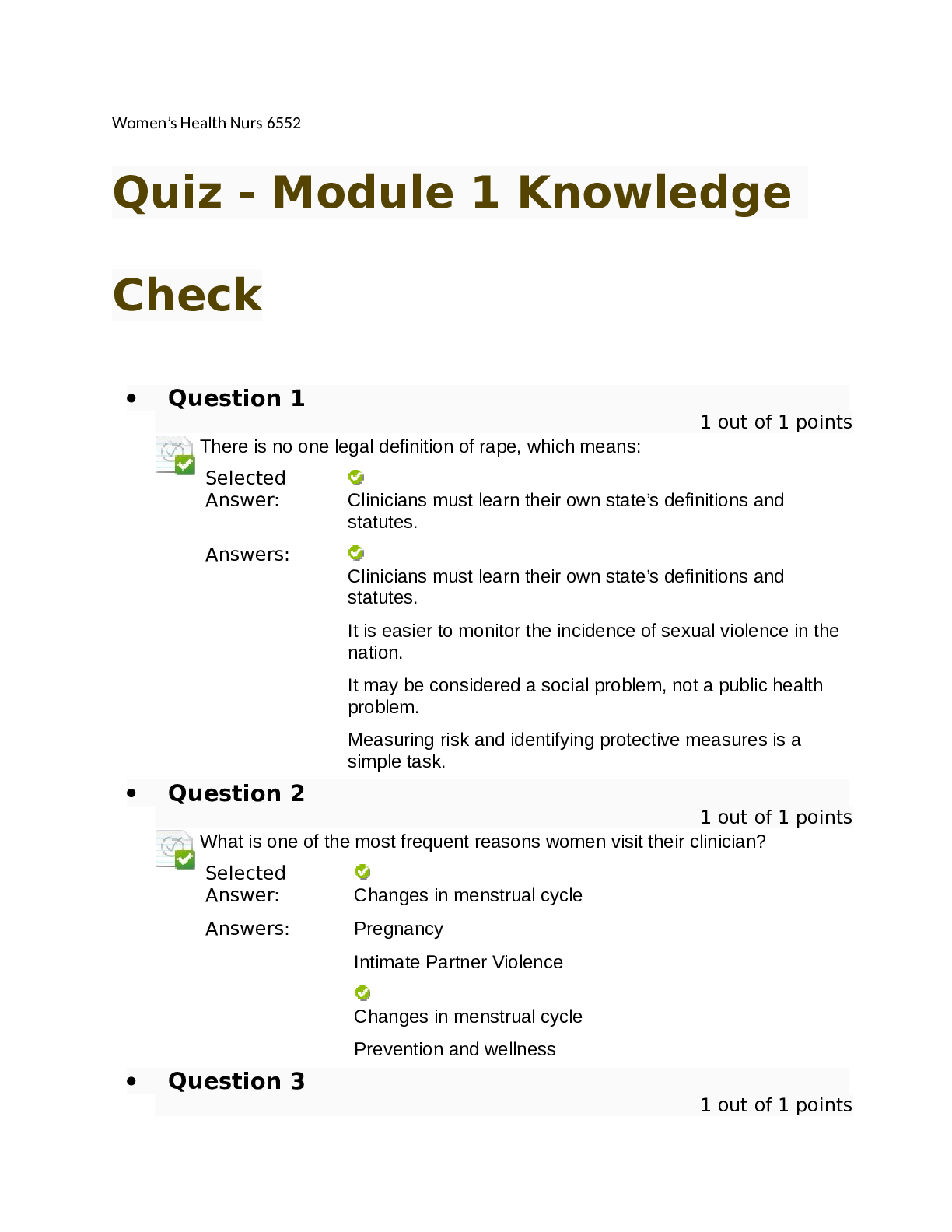

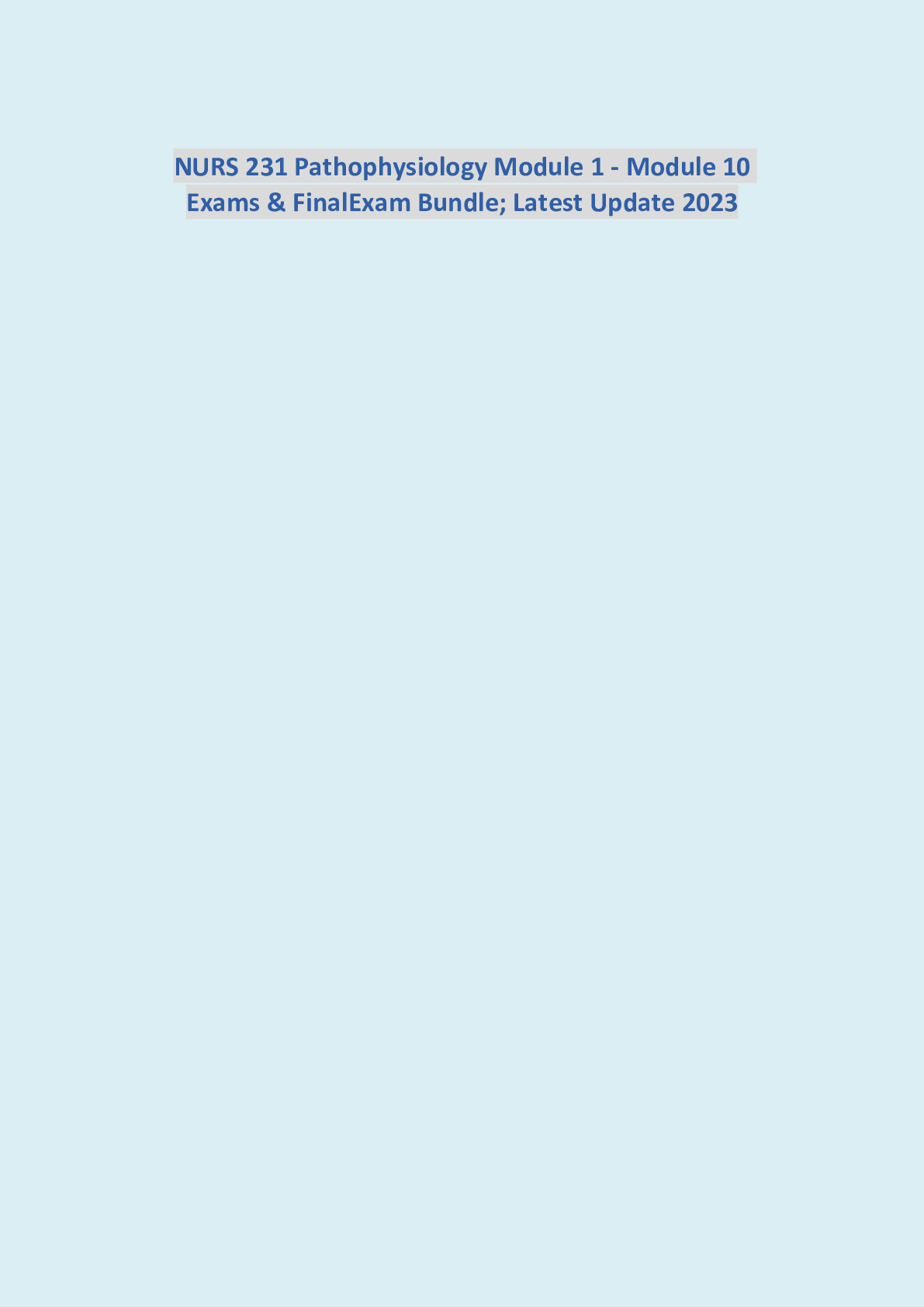


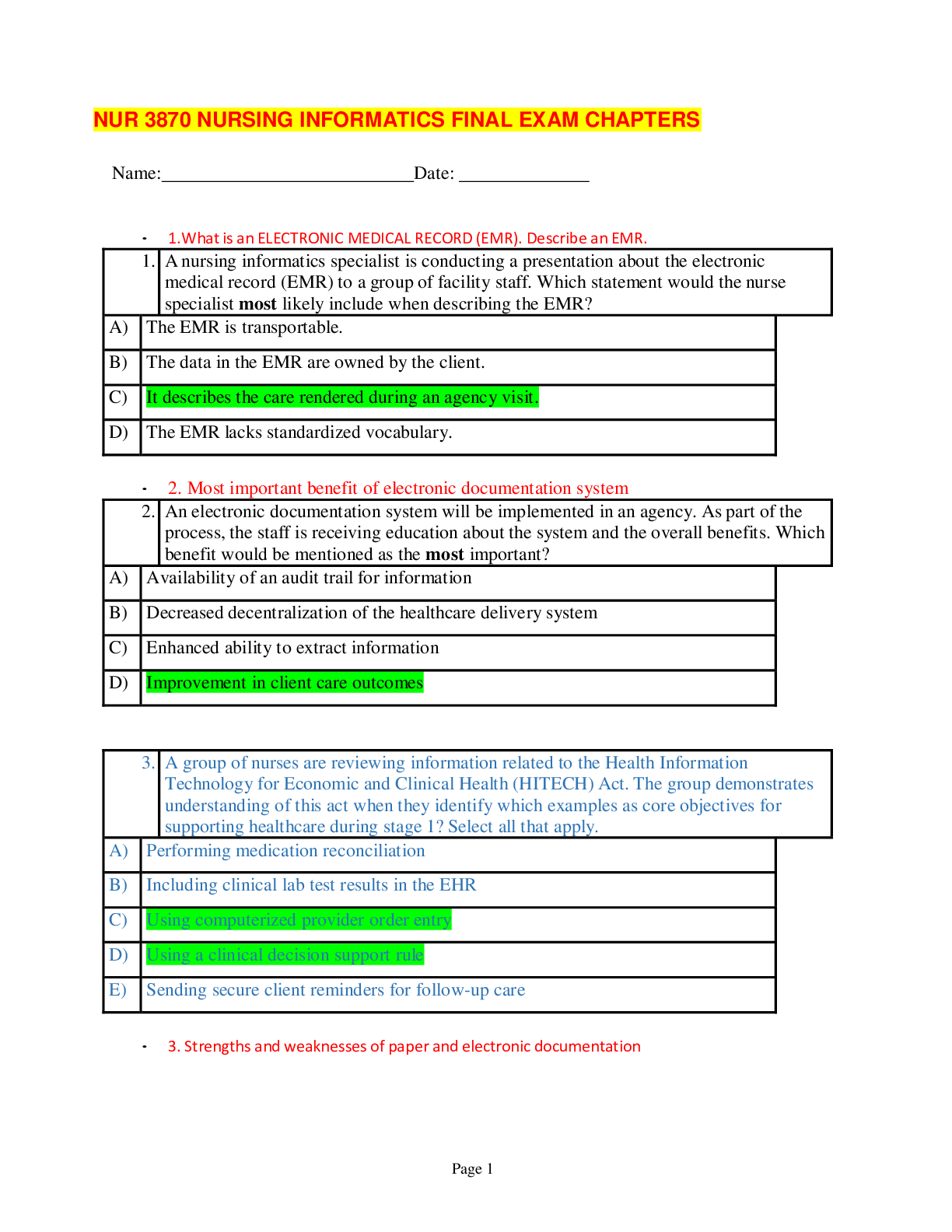
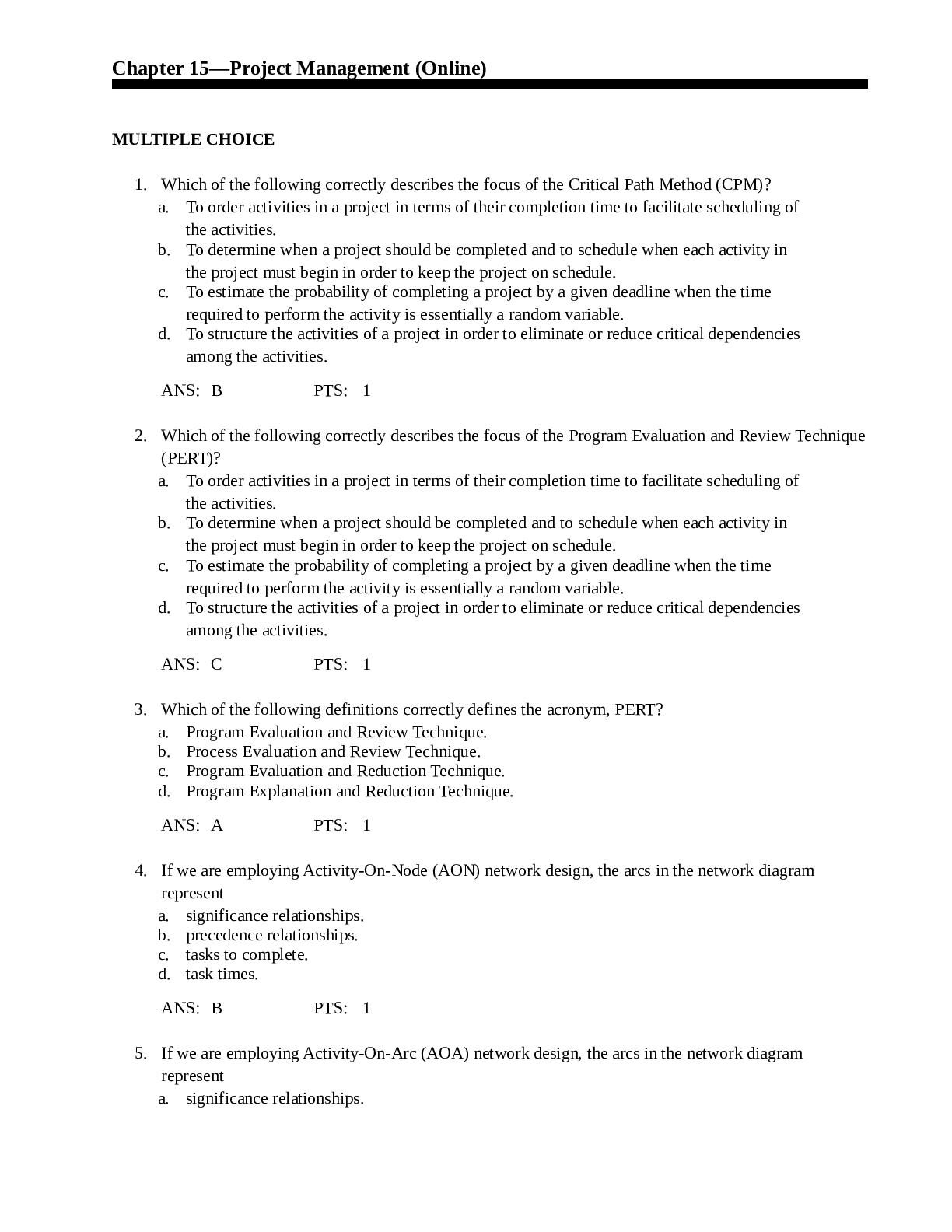



.png)
